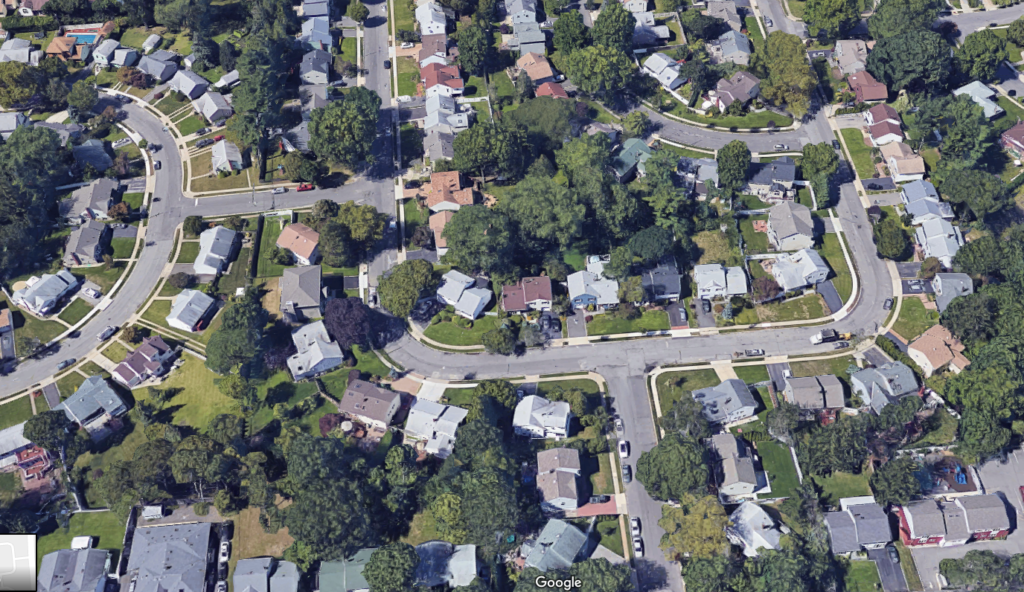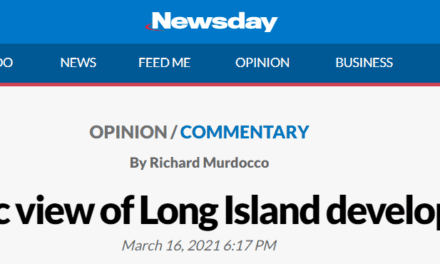The following was written for Inside Sources, and published on October 30, 2019. The piece was nationally syndicated in media outlets across the US. You can read the original here.
By Richard Murdocco
With mounting existential threats to America’s suburbs, the areas near major metropolitan centers whose tracts of single-family homes and retail strip malls once defined the American dream, local communities must think beyond their borders and band together to better prepare for the broader challenges ahead.
Across the United States, local governments have the ability to self-regulate land use throughout their community — a sizable power that shapes the physical form of neighborhoods, nurtures economic activity, and even protects the environment.
As such, this model of local control has both prioritized land-use strategies that directly benefit the municipality alone, and has incentivized local elected officials to think only within their local bounds.
With forces such as the impacts of climate change or the rise of global economic competition threatening our nation’s suburbs, such challenges cannot be dealt with by local governments alone.
With climate change, which Californians have seen manifest in recent years with increasingly frequent and longer-burning wildfires, the fire mitigation measures of local governments are no longer sufficient in protecting vulnerable communities.
Meanwhile on the east coast, the suburbs of Long Island, an area known for a multitude of local jurisdictional layers, have become increasingly reliant upon New York state and the federal government to help fortify their coasts against sea-level rise and increasingly strong storms.
As states and counties continue competing with one another for large corporations to call their respective localities home, economic competition from countries like China, India and others have added additional sizable market pressures thanks to globalization and technology that has bridged the gaps between continents. Now, small businesses not only have to worry about the competition from outside their town but also on a global level as well.
Between these forces, which are merely two examples out of many, it’s becoming readily apparent that our “home-rule” method of planning isn’t effective in combating issues that transcend geopolitical borders.
As policymakers work toward making the nation’s suburbs denser and more interconnected, there must be an aggressive push for regional cooperation between villages, towns and counties. The goal should no longer be competition for seemingly scarce investment from the private sector, but rather, working toward the collective goal of prosperity and sustainability.
On the national level, those within federal government should stop encouraging the more tribal instincts of localities, and instead work toward bringing a collective focus to grappling with issues that are far-reaching and coldly unforgiving.
But the burden to adapt isn’t on policymakers or elected officials alone.
With increased cynicism concerning the abilities of government in today’s hyper-partisan world, the public discourse toward change and new ideas has taken a decidedly nasty turn. It is up to residents and civic leaders to be more open-minded toward working with their neighbors on community issues, and ignore the influence of the social media echo chambers that seek to further entrench and divide our views.
For builders and members of the business community, public concerns shouldn’t be easily dismissed with a broad stroke of the Not-In-My-Backyard brush. Businesses looking to expand should actively engage their neighbors, and developers who want to break ground on a transformative project should involve the public early and often in the planning process. This not only ensures the community’s needs are being both understood and met, but betters the chances of project approval and completion. Such certainty attracts additional private investment, allowing communities to better compete.
As fundamental dynamics of urban/suburban relationships shift in the wake of an increasingly small world, the role of our suburbs must evolve alongside their urban counterparts. A critical piece of this evolution is ensuring our local instincts broaden their horizons as well.
An oft-forgotten element of the practice of urban planning is the need for cohesive balance — or, finding the ways to juggle economic growth with preservation of local quality of life and environmental responsibility.
This approach, fundamental in ensuring the vitality of our communities, is often crowded out at public meetings by broader arguments about the changing nature of a neighborhood or an undercurrent of fear regarding how substantive changes will affect real estate pricing.
In the long run, such concerns may eventually seem trivial as broader threats loom ever-larger overhead. In the immediate future, we must rise above the noise and begin doing the hard work of coming together.
The goal should be plans that are regional in scope, and local in implementation. Only then will we be able to face down the sizable challenges ahead.
Richard Murdocco writes on the region’s land use and regional policy issues at TheFoggiestIdea.org, and is an adjunct professor of economic development and planning at Stony Brook University.













